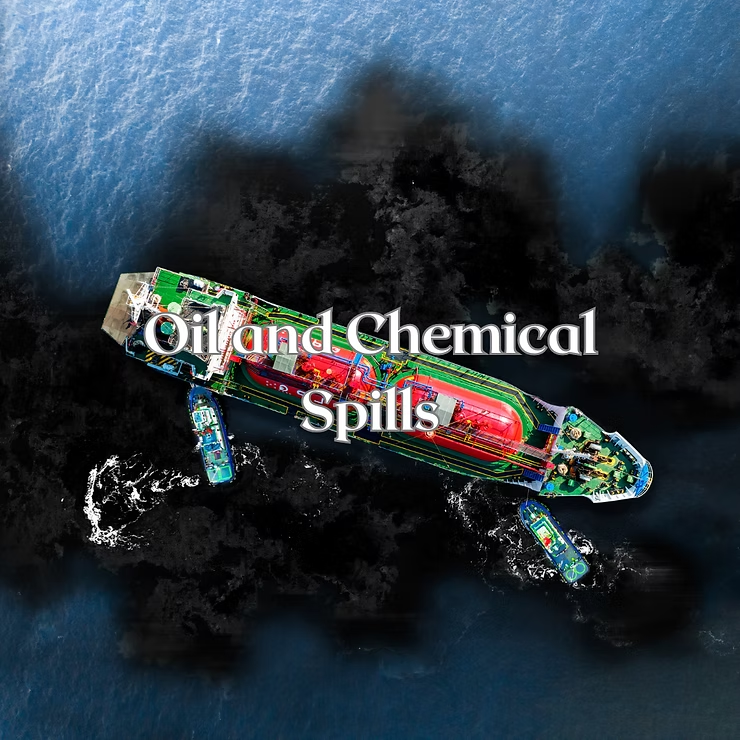Introduction
Oil and chemical spills remain one of the most pressing environmental challenges of our time. These accidents can be triggered by human error, equipment failure, or natural disasters, and their impacts are wide-ranging—from harming wildlife to contaminating water sources and disrupting ecosystems. While cleanup methods exist, prevention and preparedness are the strongest tools to minimize damage. This article explores causes, impacts, solutions, and the future of spill prevention.
Causes of Oil and Chemical Spills
Human Error
Human mistakes are among the most common causes of spills. Errors in transportation, storage, or handling can release hazardous substances into the environment. Inadequate training and negligence only increase the risk. To reduce human error, companies must invest in regular training, enforce strict safety procedures, and conduct frequent inspections.
Equipment Failure
Malfunctioning pipelines, storage tanks, and valves can also trigger spills. Corrosion and aging infrastructure increase this risk. Preventive measures include scheduled maintenance, modern leak detection systems, and the use of advanced monitoring technology. Companies that proactively invest in upgraded infrastructure reduce both environmental and financial risks.
Natural Disasters
Hurricanes, earthquakes, and floods can severely damage oil and chemical facilities. These disasters can rupture pipelines, destroy storage units, and overwhelm emergency systems. To limit potential damage, robust disaster-preparedness strategies and reinforced infrastructure are essential.
Environmental Impact
Wildlife Harm
- Oil coats bird feathers, impairing flight and insulation.
- Marine mammals ingest toxins while feeding, leading to internal injuries.
- Fish and aquatic life face suffocation as oil blocks oxygen exchange.
Water Contamination
Spills often seep into rivers, lakes, and oceans, rendering water unsafe for consumption and threatening aquatic ecosystems. Persistent chemicals can accumulate in the food chain, increasing toxicity across generations. Cleanup methods such as booms, skimmers, and bioremediation play a vital role, though complete recovery may take years.
Long-Term Ecosystem Damage
The effects of spills can linger for decades. Pollutants accumulate in soil and sediments, disrupting reproduction in wildlife and reducing biodiversity. In some regions, recovery has been slow, leaving visible scars on both land and sea ecosystems.
Prevention and Preparedness
- Safety Regulations: Strict laws enforce accountability and set industry standards.
- Equipment Maintenance: Routine inspections detect weaknesses before they cause disasters.
- Emergency Response: Preparedness plans ensure quick containment and reduce spill spread.
Spill Cleanup Methods
Containment and Recovery
Floating booms and skimmers help trap and remove spilled substances. Absorbent materials and vacuum systems further aid recovery efforts.
Chemical Dispersants
Dispersants break oil into smaller droplets, speeding natural degradation. While effective, their toxicity must be carefully evaluated.
Bioremediation
Microorganisms can digest pollutants, turning them into less harmful byproducts. This natural method is eco-friendly but requires favorable environmental conditions and time.
Legal and Financial Consequences
- Fines and Penalties: Heavy financial costs deter negligence.
- Liability and Compensation: Responsible parties cover cleanup, restoration, and damages.
- Environmental Restoration: Ecosystems must be rehabilitated through cleanup and wildlife recovery programs.
Case Studies
Exxon Valdez Oil Spill (1989)
A tanker accident in Alaska spilled 11 million gallons of crude oil, devastating marine life and prompting stronger safety regulations.
Deepwater Horizon Spill (2010)
Millions of barrels of oil leaked into the Gulf of Mexico, highlighting the need for advanced safety systems and robust emergency responses.
Bhopal Gas Tragedy (1984)
A pesticide plant leak in India released toxic gas, killing thousands and serving as a stark reminder of industrial safety negligence.
The Role of Technology
- Remote Sensing: Satellites and aerial imaging detect risks and monitor spills in real time.
- Leak Detection: Fiber-optic and acoustic sensors provide early warnings of structural failures.
- Drone Surveillance: Drones offer quick inspections of pipelines, offshore rigs, and storage sites.
The Future of Spill Prevention
Spill prevention is evolving through the use of robotics for cleanup, nanomaterials for absorption, and bioremediation advancements. A global shift toward renewable energy such as wind and solar also reduces dependency on fossil fuels. International cooperation through shared resources, knowledge exchange, and joint response teams will be key in minimizing risks worldwide.
Conclusion
Oil and chemical spills pose grave threats to ecosystems, communities, and economies. Yet with rigorous prevention, technological innovation, and global collaboration, these risks can be reduced. By prioritizing safety and sustainability, society can work toward a cleaner, safer, and more resilient future.

